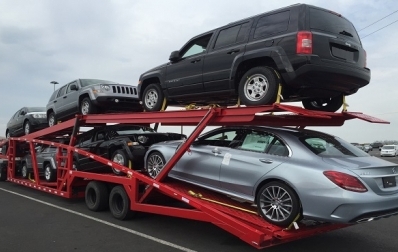
Hitches are essential hauling components mainly used several kinds of truck trailers such as car trailers, enclosed trailers, gooseneck trailers, etc. Trailer hitches are classified into three types based on their design and capacity. They include bumper hitch, receiver hitch and gooseneck hitch. A receiver hitch is a common trailer hitch that attaches to the back of a vehicle and has a tube for connecting a ball mount or other hitch accessory. According to the car trailer manufacturers, square receivers are used in the vehicle trailer hitch. Receiver hitches are usually vehicle-specific, have a standard receiver tube size, and are classified into one of five hitch classes.
Class 1 receiver hitch:
Tow up to 2000 pounds with a Class 1 receiver hitch. This hitch will fit a 6-foot trailer flawlessly. Class 1 receivers are ideal for family cars, compact SUVs, sleeper campers, sedans, crossovers and other vehicles. Aside from that, it's designed to attach to vehicle frames.
Class 2 receiver hitch:
A Class 2 receiver hitch has a 1 or 14-inch tube and can hold up to 3500 pounds of weight. Lightweight and compact vehicles, like minivans, sedans, CUVs, and small SUVs, can use a Class 2 receiver hitch.
Class 3 receiver hitch:
The Class 3 hitch is designed to tow trailers up to 24 feet long. It is designed with a receiver tube (2") that efficiently handles loads of up to 8000 lbs. This is a heavy-duty hitch that works well with 4 car haulers, minivans, vans, SUVs, trucks, and other vehicles.
Class 4 receiver hitch:
A 2" receiver tube is included with the Class 4 receiver hitch, which can handle up to 12000 pounds of weight. This is a heavy-duty car trailer hitch that may be used on compact vehicles and SUVs.
Class 5 receiver hitch:
With a 2" receiver tube, the Class 5 rear receiver hitch is one of the most powerful. This receiver hitch has a load-bearing capability of around 17000 lbs. Vans, trucks, and SUVs may all use a Class 5 receiver.
The importance of rear receiver hitches is huge. They are manufactured with a specific function in mind. The components are mostly mounted to the vehicle's bumper or chassis. Towing possibilities are more diverse when using a standard receiver hitch size. It allows you to connect a range of towing devices to your car without the use of an adapter or making any changes.

